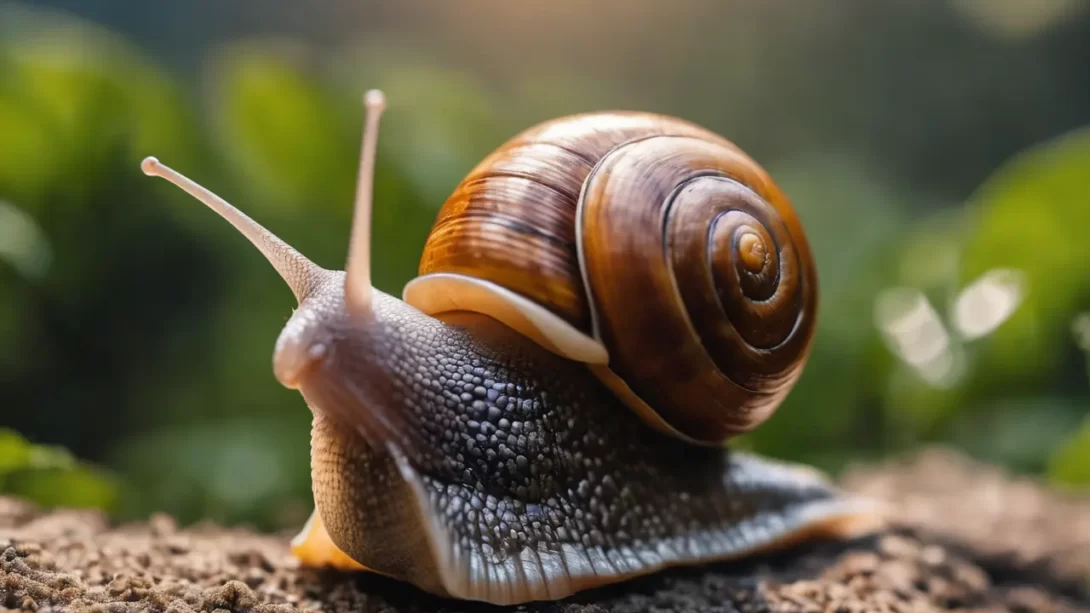Snails, belonging to the class of mollusks, are familiar creatures found in a variety of environments, from gardens to aquatic settings. These slow-moving organisms, known for their distinct shells and trail of slime, have long fascinated both scientists and casual observers. A topic of particular interest is the capacity of these seemingly simple creatures to experience pain. This question not only probes the depths of biological understanding but also touches on philosophical and ethical considerations.
Snails: Biology and Nervous System
To explore the concept of pain in snails, it’s essential to understand their basic biology, particularly their nervous system. Snails, like other mollusks, have a rudimentary nervous system compared to mammals or birds. It consists of a series of nerve cells (neurons) and ganglia (clusters of neurons) that control their bodily functions and responses to the environment. This system is relatively simple, lacking the complexity seen in higher organisms. It raises questions about the snail’s capacity for sophisticated sensory experiences, such as pain, which in more complex animals involves intricate neural pathways and brain structures.
Defining Pain: Biological and Philosophical Perspectives
Defining pain in biological terms typically involves the capacity to experience unpleasant sensory and emotional experiences associated with actual or potential tissue damage. In higher animals, this is a complex process involving not just the detection of harmful stimuli but also the emotional and cognitive processing of these sensations, which is facilitated by advanced nervous systems.
From a philosophical perspective, the question of pain in snails delves into the realm of consciousness and subjective experience. Can a snail, with its simple nervous system, have a subjective experience of pain? Or are its responses to harmful stimuli purely reflexive and devoid of any conscious sensation? This debate is not only scientific but also deeply philosophical, as it challenges our understanding of consciousness and sensory experience in non-human organisms.
Research on Pain Perception in Snails and Similar Organisms
Research in the field of invertebrate biology provides some insights into how snails and similar organisms might experience pain. Studies often focus on observable behaviors in response to potentially harmful stimuli. However, interpreting these responses can be challenging. For example, a snail retracting into its shell or exhibiting avoidance behavior could be a simple reflex rather than an indication of pain experience.
Key research findings often involve physiological responses, such as the release of stress chemicals in snails when exposed to adverse conditions. While such responses indicate a reaction to harmful stimuli, they do not conclusively prove the experience of pain as understood in higher animals. The complexity of definitively establishing pain perception in snails is partly due to the limitations in our ability to measure subjective experiences in non-verbal organisms.
Behavioral Responses of Snails to Harmful Stimuli
Observing how snails react to stimuli that could be harmful or damaging provides valuable information. Common behaviors include withdrawing into their shells, secreting more mucus, or moving away from a stimulus, like salt or physical touch. These behaviors might suggest a basic level of nociception – the ability to detect harmful stimuli.
However, it’s crucial to differentiate between nociception and pain. Nociception is a physiological process, a direct and usually reflexive response to harmful stimuli. Pain, in contrast, is more complex, involving emotional and cognitive dimensions. In snails, the observed behaviors might not go beyond the nociceptive level due to their simple nervous systems. The lack of clear evidence for the emotional and cognitive aspects of pain in snails makes it difficult to assert they experience pain as humans or other higher animals do.
Ethical Considerations in Handling Snails
Regardless of the current understanding of pain perception in snails, these discussions bring forth important ethical considerations. The way humans interact with and treat snails, whether in research, as pets, or in gardens, should be guided by principles of compassion and humane treatment. The possibility that snails might experience some form of discomfort or distress, even if not pain as we understand it, calls for a cautious and respectful approach in handling them.
In research settings, this could mean minimizing invasive procedures and ensuring proper care. For gardeners and pet owners, it involves avoiding harmful practices like the use of salt to deter snails. These practices reflect a broader ethical stance that advocates for the humane treatment of all creatures, regardless of their perceived level of sentience or complexity.
Conclusion: The Ongoing Debate and Its Implications
In conclusion, the question of whether snails feel pain remains an area of ongoing scientific and philosophical debate. The current understanding, based on the simplicity of the snail’s nervous system and observed behaviors, suggests that snails do not experience pain in the same way more complex organisms do. Their responses to harmful stimuli appear to be more reflexive and lacking the emotional and cognitive elements that characterize pain in humans and other animals with more advanced nervous systems.
However, the field of invertebrate biology is continually evolving, and future research may offer new insights into the sensory experiences of snails and other similar organisms. This exploration is not only crucial for advancing scientific knowledge but also has significant ethical implications. It challenges us to consider our responsibilities towards all living beings, regardless of their size or complexity.
The discussion about pain perception in snails underscores the importance of approaching all forms of life with respect and care. Whether in scientific research, gardening, or as part of the ecosystem, treating snails with consideration is a reflection of broader ethical principles. It speaks to our recognition of the intrinsic value of life in all its forms.
As we continue to explore the mysteries of the natural world, our understanding of creatures like snails will deepen. This knowledge will not only enrich our appreciation of the diversity of life but also guide our interactions with the myriad forms of life that share our environment. In the meantime, adopting a stance of respect and caution in our treatment of snails and other invertebrates is a prudent and ethical approach, aligning with the broader goals of conservation and humane treatment of all creatures.




